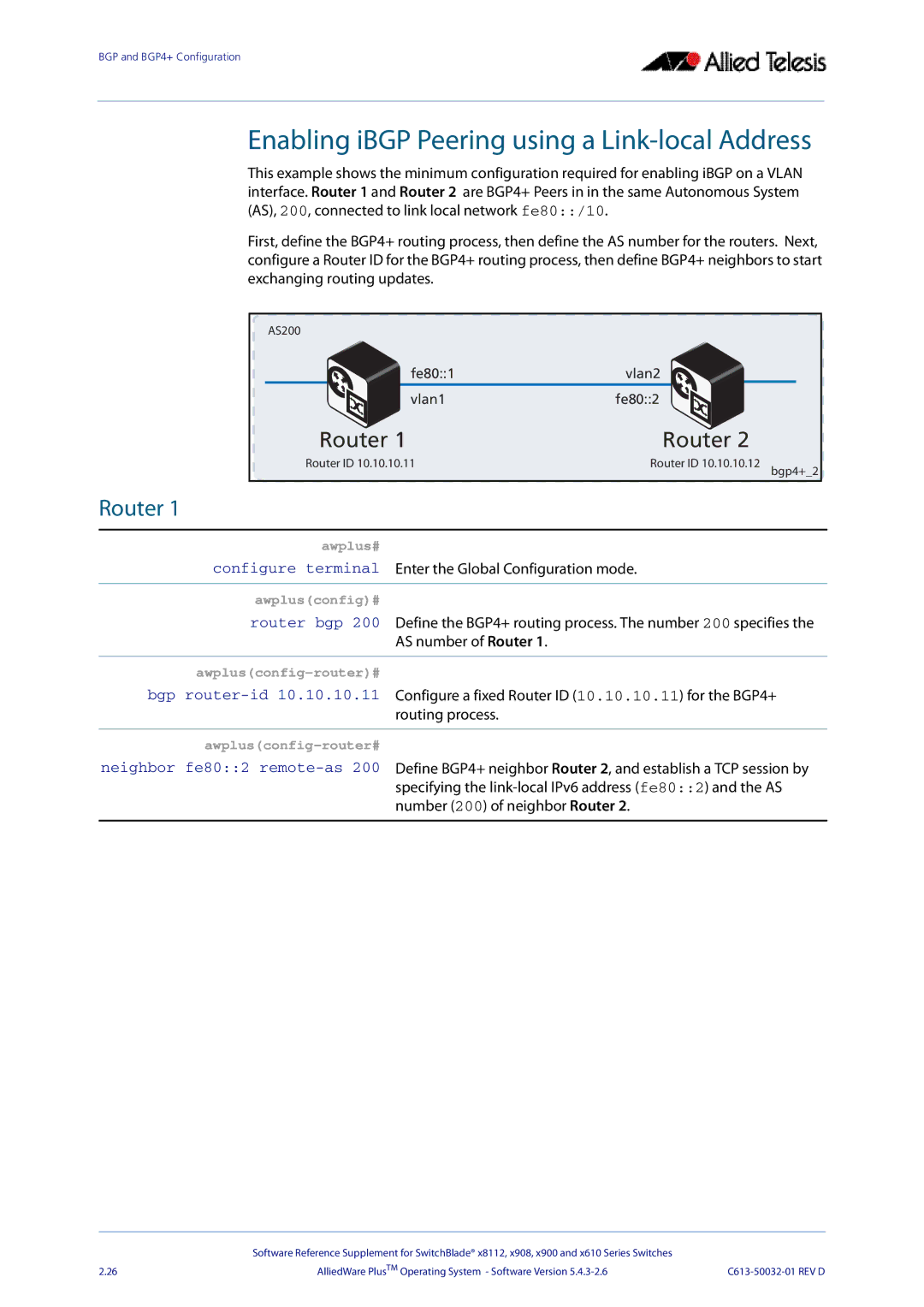
BGP and BGP4+ Configuration
Enabling iBGP Peering using a Link-local Address
This example shows the minimum configuration required for enabling iBGP on a VLAN interface. Router 1 and Router 2 are BGP4+ Peers in in the same Autonomous System (AS), 200, connected to link local network fe80::/10.
First, define the BGP4+ routing process, then define the AS number for the routers. Next, configure a Router ID for the BGP4+ routing process, then define BGP4+ neighbors to start exchanging routing updates.
AS200 |
|
|
fe80::1 | vlan2 |
|
vlan1 | fe80::2 |
|
Router 1 | Router 2 |
|
Router ID 10.10.10.11 | Router ID 10.10.10.12 | bgp4+_2 |
Router 1
awplus#
configure terminal Enter the Global Configuration mode.
awplus(config)#
router bgp 200 Define the BGP4+ routing process. The number 200 specifies the AS number of Router 1.
awplus(config-router)#
bgp
awplus(config-router#
neighbor fe80::2
Software Reference Supplement for SwitchBlade® x8112, x908, x900 and x610 Series Switches
2.26 | AlliedWare PlusTM Operating System - Software Version |
